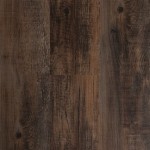Hardwood Flooring Over Vinyl Tile: A Comprehensive Guide
If you're looking to upgrade your flooring and considering installing hardwood over vinyl tile, it's crucial to understand the essential aspects to ensure a successful project. Here's a comprehensive guide to help you through the process:
1. Compatibility Assessment
Not all vinyl tiles are suitable for hardwood flooring installation. It's vital to determine the compatibility of your existing vinyl tile. Sheet and tile vinyl flooring with a strong adhesive bond to the subfloor are most suitable, while loose-lay vinyl tiles or those with a peeling adhesive layer may not provide a secure base.
2. Surface Preparation
Thoroughly clean the vinyl tile surface to remove any dirt or debris that could interfere with the adhesive bond. Use a degreaser to eliminate any oily substances or residue. Ensure that the vinyl tile is firmly attached to the subfloor and repair any loose areas before proceeding.
3. Leveling and Smoothing
Hardwood flooring requires a level and smooth surface to prevent buckling or warping. If your vinyl tile has any unevenness or indentations, consider using a self-leveling compound to create a level base. This will help distribute weight evenly and prevent the hardwood from flexing too much.
4. Moisture Control
Moisture is a major enemy of hardwood flooring. Ensure that your vinyl tile has been installed over a moisture barrier to prevent moisture from seeping through and damaging the hardwood. Consider using a vapor barrier or underlayment with moisture-resistant properties to further protect your investment.
5. Adhesive Selection
Choose an adhesive specifically designed for installing hardwood flooring over vinyl tile. These adhesives typically have a high bond strength to ensure a secure hold. Read the manufacturer's instructions carefully and follow the recommended application process to ensure proper adhesion.
6. Installation Technique
Installing hardwood flooring over vinyl tile requires patience and precision. Use a flooring nailer or stapler to attach the hardwood planks to the subfloor. Start from the center and work your way out, securing each plank individually. Ensure that the planks are firmly attached and spaced evenly to prevent gaps or buckling.
7. Finishing Touches
Once the hardwood flooring is installed, complete the project with finishing touches such as sanding, staining, and sealing. These steps will protect the hardwood and enhance its appearance. Choose a stain color that complements your decor and apply it evenly, following the manufacturer's guidelines.
8. Maintenance and Care
To maintain the beauty and longevity of your hardwood flooring, regular cleaning and maintenance are crucial. Sweep or vacuum regularly to remove dust and dirt, and use a hardwood floor cleaner occasionally to clean deeper and protect the finish. Avoid using excessive water or harsh chemicals that could damage the wood.
Conclusion
Installing hardwood flooring over vinyl tile can transform your space and add value to your home. By following these essential aspects, you can achieve a successful and durable installation. Remember to assess compatibility, prepare the surface properly, control moisture, choose the right adhesive, use proper installation techniques, and maintain your hardwood flooring for optimal results.

Vinyl Tile Installation A Comprehensive Guide Gc Flooring Pros

New Vinyl Plank Flooring Over Tile Table And Hearth

How To Install Floating Vinyl Flooring Over Old Floors Simply2moms

Should You Install Vinyl Floor Over Tile

Can You Put Laminate Or Vinyl Plank Flooring Over Tile

How To Install Vinyl Flooring Over Hardwood Floors Wood Floor Fitting

Luxury Vinyl Tile Vs Hardwood Flooring

New Vinyl Plank Flooring Over Tile Table And Hearth

How To Lay Tile Over An Existing Vinyl Floor Today S Homeowner

Installation Of Vinyl Flooring Over Hardwood Guide Options
Related Posts








